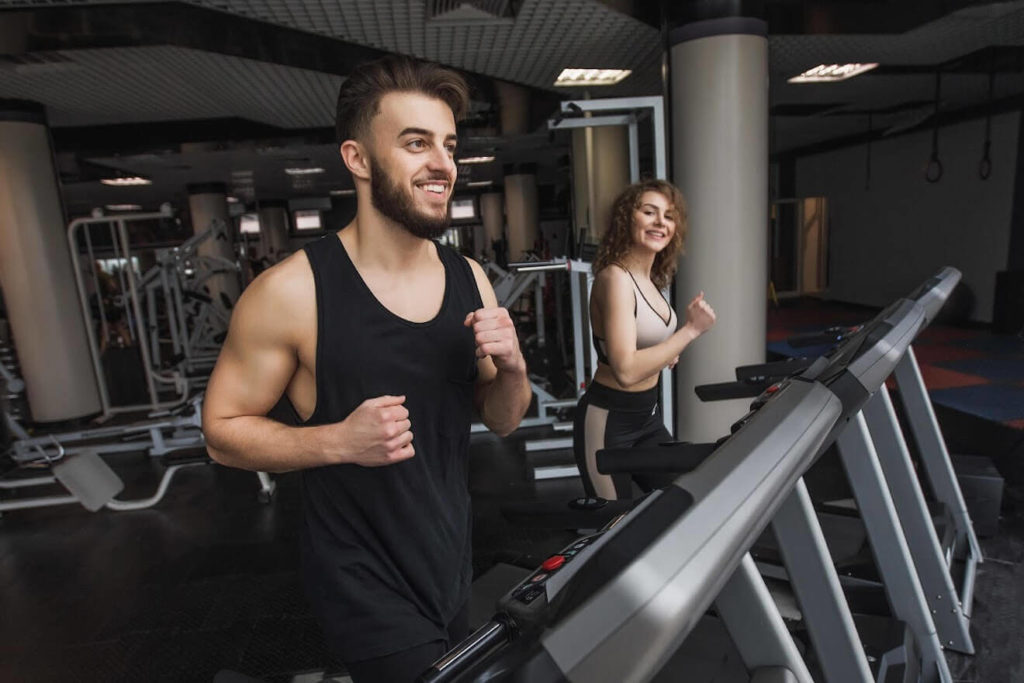
Convenience of Shorter Workouts
Reaping the rewards of regular exercise benefits many people but can be disadvantageous when performed for lengthy periods of time.
This is often the case when it comes to motivation, since it requires more energy to sustain workouts that last longer than an hour.
In addition, finding the time to workout with a busy schedule is enough of a challenge for a large portion of society.
Rather than disregarding exercise completely, it seems logical to train efficiently and concisely enough to maintain cardiovascular conditioning and induce fat loss for great results.
High intensity interval training accomplishes this by getting heart rate to the maximum through periods of recovery and activity. This time frame is usually within 10-20 minutes.
The best part of HIIT is that it can be modified for all ages and levels of fitness, so an individual can always progress further to keep challenging themselves.
How to Effectively Perform HIIT Cardio
High intensity interval training provides an alternative to standard aerobic exercise, which modifies the body’s cardiovascular, skeletal-muscle, and metabolic systems.
HIIT encompasses a variety of different of exercises which can include walking, stationary biking, treadmill, stair climbing, sprinting, swimming, rowing, and other similar energy burst activities.
HIIT cardio is defined as anaerobic training, which utilizes a different energy system in comparison to aerobics. Anaerobic exercise produces lactic acid build up in the muscles, which is stimulated from the phosphagen or glycolytic pathways.
Aerobic exercises differ as they have longer endurance activity periods, which stimulates the oxidative pathways.
The goal of effective high intensity training should be to reach the maximum heart rate gradually. To get the maximum heart rate specific for you, subtract your age from the maximum heart beats per minute (220 – age = MHR).
High intensity training provides health benefits over regular aerobic training, including increased capillary and enzyme production. The anti aging enzyme telomerase has been shown to be released in athletic and non athletic individuals in recent studies.
Interval training also influences the release of hormones, such as growth hormone, brain derived neurotrophic factor (BDNF), and catecholamines.
Release of these hormones can be beneficial for regrowth of brain cells, repair of muscle tissue, and burning subcutaneous fat in stubborn areas.
As the body recovers from HIIT workouts, it consumes extra oxygen and increases metabolic activity which is known as Exercise Post Oxygen Consumption (EPOC).
Incorporating HIIT Training
High intensity interval training can used by nearly anyone, but there should be precautions taken with for individuals with various levels of fitness conditioning. Fitness levels exercises can be categorized as:
Unfit: Light impact, slower exercises would be the most suitable for individuals newer to aerobic/anaerobic activity around 75% of maximum heart rate. This can be walking with speed intervals, stationary bike at low intensity, or treadmill walking.
Med fit training: This level utilizes about 80% of maximum heart rate and incorporate any of the standard high intensity exercises. Ex. Treadmill, stairs, or incline walking/jogging
High fit training: Very athletic/fit individuals can utilize most of the maximum heart rate (90-95%) with many challenging exercises/routines that are more high impact. Ex. Body circuits, sprints
Intervals are very important with training as they can make the exercises more/less effective. Aim for 3-8 intervals over a time period of 10-20 minutes for best results.
The intervals have ratios with the recovery time periods and can vary depending on your fitness level.
The longer recovery times makes the training easier by removing more lactic acid from the muscles, however recovering for too long will make reaching the max heart rate difficult.
To enhance the lactic acid systems (phosphagen and glycolytic) effectively you should you use ratios of 1:3 to 1:5. For example, 10 seconds of intense activity followed by 30 seconds of recovery or 5 seconds of activity followed by 25 seconds of recovery.
The ideal ratio to aim for would be 1:1, with activity times being exactly the same as the recovery time.
Lastly, high intensity training should be limited to no more than 2-3 times per week. Recovery is highly beneficial for rebuilding of the body’s tissues and energy systems.
Individuals with injuries and preexisting conditions may need further consul from professionals before starting any high intensity exercises.
The Wrap Up
The advantages of incorporating high intensity interval training can make exercise convenient while still improving all of the health benefits of standard aerobics. Training should be modified based on your fitness level and progressed gradually similarly with any exercise regiment. Find a program that works for you and apply it to your workouts accordingly.


Leave a Reply
You must be logged in to post a comment.